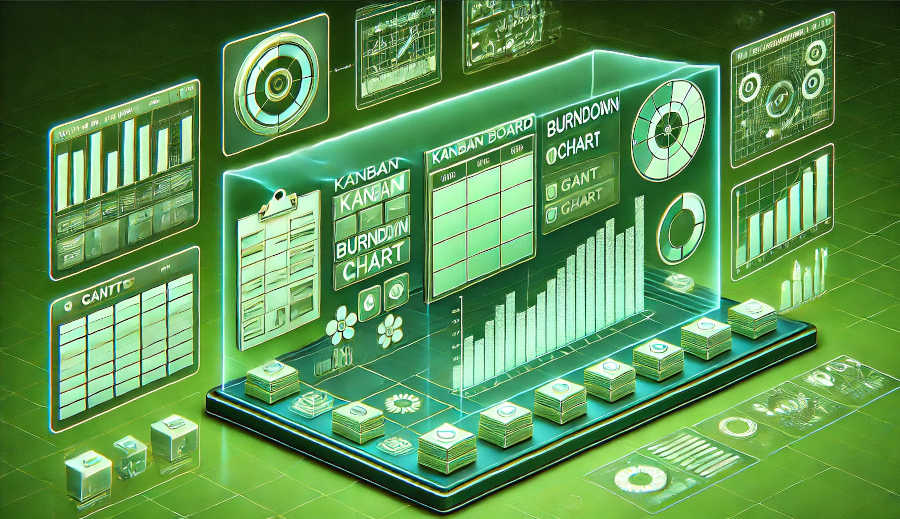The Technology Review (TR) process is a crucial part of the Integrated Product Development (IPD) framework. It serves as a checkpoint to assess the technical viability, progress, and risks associated with a product development project. By conducting thorough TR reviews at key stages, organizations can ensure that the product meets the required technical specifications, is developed within the planned schedule and budget, and is ready for the next phase of development. This article will analyze five key steps in the TR review process, highlighting their importance and providing insights into how to execute them effectively.
Understanding the Objectives
The first step in the TR review process is to clearly understand the objectives. These objectives should be aligned with the overall product strategy and business goals. They define what the review aims to achieve, such as evaluating the maturity of a technology, validating design concepts, or identifying potential technical bottlenecks. By having well-defined objectives, the review team can focus their efforts and ensure that the review is relevant and productive. For example, if the objective is to assess the feasibility of a new material for a product, the review will center around analyzing the material's properties, availability, and compatibility with the manufacturing process. This clarity helps in setting the scope of the review and determining the criteria for success. Without a clear understanding of the objectives, the review may become unfocused, leading to wasted time and resources. It is essential for the project team, including the product managers, engineers, and other stakeholders, to be involved in defining these objectives to ensure a shared understanding and commitment.
Moreover, the objectives should be specific, measurable, achievable, relevant, and time-bound (SMART). This allows for a more precise evaluation of the technology or design under review. For instance, instead of a vague objective like "improve the performance of the product," a SMART objective could be "increase the product's processing speed by 30% within six months while maintaining the same power consumption." Such an objective provides clear direction for the review process and enables accurate assessment of whether the goal has been met. Additionally, the objectives may evolve as the project progresses, and it is important to regularly review and update them to reflect the changing circumstances and requirements of the product development.
Assembling the Right Team
The success of a TR review depends significantly on the composition of the review team. The team should consist of individuals with diverse expertise relevant to the technology or design being reviewed. This includes technical experts, such as engineers with knowledge of the specific domain, materials scientists, and software developers. They bring in-depth knowledge of the technical aspects and can provide valuable insights into the feasibility and potential challenges. For example, in a review of a new smartphone camera technology, a team with experts in optics, image processing, and sensor design would be essential. These experts can analyze the technical specifications, evaluate the performance of prototypes, and identify any potential flaws or areas for improvement.
In addition to technical experts, the review team should also include representatives from other functions such as product management, marketing, and manufacturing. Product managers can ensure that the technology aligns with the overall product strategy and market requirements. Marketing representatives can provide insights into customer needs and competitive landscape, helping to determine if the technology will be appealing to the target market. Manufacturing experts can assess the manufacturability of the design, identifying potential issues related to production processes, cost, and quality control. By bringing together a cross-functional team, the TR review can take into account all aspects of the product development, from technical feasibility to marketability and manufacturability.
Furthermore, the team members should have good communication and collaboration skills. Effective communication is crucial for sharing information, discussing ideas, and reaching a consensus during the review process. Team members need to be able to clearly express their opinions, listen to others, and work together to analyze the data and make informed decisions. A diverse team with strong communication skills can leverage the different perspectives and expertise to conduct a comprehensive and accurate review. It is also important to ensure that the team members are given sufficient time and resources to prepare for the review and actively participate in the discussions.
Conducting a Thorough Technical Assessment
Once the team is assembled and the objectives are clear, the next step is to conduct a thorough technical assessment. This involves evaluating the technology or design against the defined criteria. The assessment should cover various aspects, including functionality, performance, reliability, and scalability. For functionality, the team needs to determine if the technology can perform the required tasks as specified. This may involve testing prototypes, analyzing design specifications, and comparing with industry standards. For example, if the technology is a new battery for an electric vehicle, the functionality assessment would include testing its charging and discharging capabilities, energy storage capacity, and compatibility with the vehicle's electrical system.
Performance evaluation focuses on how well the technology meets the performance targets. This could include measures such as speed, accuracy, efficiency, and throughput. The team may use various tools and techniques, such as simulations, bench tests, and field trials, to gather data on performance. For instance, in the case of a new software algorithm, performance testing could involve measuring the time it takes to process large datasets, the accuracy of the results, and the impact on system resources. Reliability assessment is also crucial, as it determines the technology's ability to function consistently over time under different conditions. This may involve stress testing, accelerated life testing, and analyzing historical data if available. A reliable technology is essential to ensure customer satisfaction and minimize the risk of product failures.

Scalability is another important aspect of the technical assessment. The team needs to consider whether the technology can be scaled up or down to meet the changing demands of the market. This includes evaluating factors such as production capacity, cost scalability, and the ability to integrate with other systems. For example, a manufacturing process that is suitable for small-scale production may not be scalable for mass production. By conducting a comprehensive technical assessment, the review team can identify any technical issues or limitations early in the development process, allowing for timely corrective actions and ensuring the success of the product.
Identifying and Mitigating Risks
During the TR review, it is essential to identify and mitigate potential risks. Risks can arise from various sources, such as technical uncertainties, changes in the market, or regulatory requirements. Technical risks may include the failure of a new technology to meet the performance requirements, compatibility issues with existing systems, or the inability to manufacture the product at the desired quality level. Market risks could involve a shift in customer preferences, the emergence of new competitors, or changes in market demand. Regulatory risks may stem from new laws or standards that the product needs to comply with.
To identify risks, the review team can use techniques such as brainstorming, risk checklists, and historical data analysis. Brainstorming sessions allow team members to share their insights and ideas about potential risks. Risk checklists can provide a structured approach to identify common risks in a particular technology or industry. Historical data analysis can help in identifying patterns and trends of risks that have occurred in similar projects. Once the risks are identified, the team needs to assess their likelihood of occurrence and the potential impact on the project. This allows for prioritization of risks and the development of appropriate mitigation strategies.
Mitigation strategies can vary depending on the nature of the risk. For technical risks, the team may invest in further research and development to address the uncertainties, seek alternative technologies, or modify the design. Market risks can be mitigated by conducting market research to stay informed about customer needs and competitive landscape, and by developing contingency plans. Regulatory risks can be managed by closely monitoring regulatory changes, engaging with regulatory authorities, and ensuring compliance from the early stages of product development. By effectively identifying and mitigating risks, the project can proceed with reduced uncertainty and increased chances of success.
Making Informed Decisions
The final step in the TR review process is to make informed decisions. Based on the technical assessment, risk analysis, and the project's objectives, the review team needs to decide whether the technology or design is ready to move to the next phase of development. This decision should be based on a comprehensive evaluation of all the factors considered during the review. If the technology meets the requirements, the risks are manageable, and the objectives are achieved, the decision may be to proceed with the next phase. However, if there are significant technical issues, unmitigated risks, or the technology does not align with the objectives, the decision may be to delay, modify, or even abandon the project.
Making informed decisions requires a balanced approach. The team needs to consider both the short-term and long-term implications of the decision. For example, a decision to proceed with a technology that has some minor technical issues may be acceptable if the benefits outweigh the risks in the long run and there are plans to address the issues in the future. On the other hand, a decision to abandon a project may be difficult but necessary if the risks are too high and the chances of success are slim. It is also important to communicate the decision clearly to all the stakeholders, including the project team, management, and customers. This ensures that everyone is on the same page and can take appropriate actions based on the decision.
In addition, the decision-making process should be transparent and based on objective criteria. The review team should document the reasons for the decision, including the evaluation of the technical aspects, risk assessment, and alignment with the objectives. This documentation serves as a reference for future projects and helps in justifying the decision to stakeholders. By making informed decisions, the organization can optimize the use of resources, minimize the risk of product failures, and increase the chances of delivering a successful product to the market.
Conclusion
The TR review process is a complex but essential part of product development. The five key steps analyzed in this article - understanding the objectives, assembling the right team, conducting a thorough technical assessment, identifying and mitigating risks, and making informed decisions - all play a crucial role in ensuring the success of the review. By clearly defining the objectives, bringing together a diverse and skilled team, conducting a comprehensive technical evaluation, proactively managing risks, and making well-informed decisions, organizations can improve the quality of their product development process, reduce the time and cost associated with development, and increase the likelihood of bringing a competitive product to market. Each step is interdependent, and a failure in any one of them can have a significant impact on the overall outcome of the review and the product development project. Therefore, it is important for organizations to invest time and resources in implementing these steps effectively and continuously improving their TR review process to stay ahead in the highly competitive business environment. Regularly reviewing and updating the process based on lessons learned from past projects can also help in enhancing the effectiveness of the TR review and driving better product development results.
ARTICLE TITLE :Analysis of 5 key steps in the TR review process ,AUTHOR :ITpmlib

















